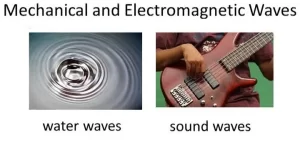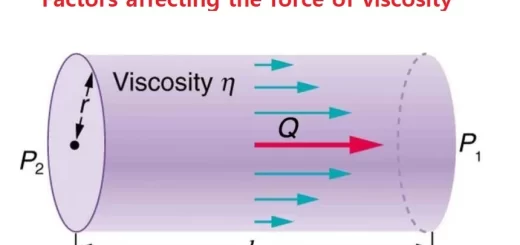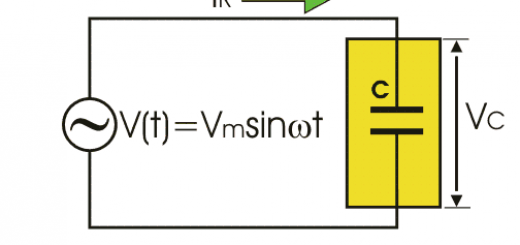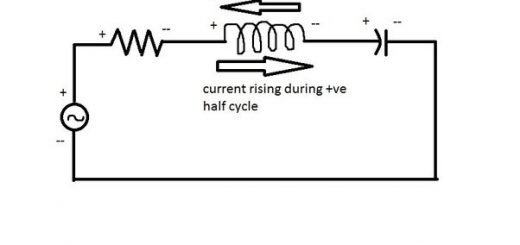Wave motion types, Properties of Mechanical waves and Electromagnetic waves
There are two types of motion, which are Translational motion and Periodic motion, Translational motion is the motion that has a starting point and end point, Periodic motion is the motion that repeats itself regularly in equal intervals of time, Periodic motion can be classified into wave motion and oscillatory motion.
Wave motion
When we throw a stone in water, The collision of the stone with water is a source of disturbance, This disturbance propagates on the surface of water in the form of uniform concentric circles, whose center is the position at which the stone falls.
These circles transfer the energy in the same direction of their propagation, These circles are called water waves and their propagation represents the wave motion, Wave is the disturbance that propagates and transfers the energy in the direction of its propagation.
Types of waves
There are many types of waves around us, some waves can be seen such as water waves, and other waves can not be seen but we can detect them such as radio and TV waves, Waves can be classified into Mechanical waves and Electromagnetic waves.
Types of mechanical waves are transverse waves (such as water waves) and longitudinal waves (such as sound waves), Types of Electromagnetic waves are transverse waves only (such as radio waves).
Mechanical waves
Sources: Mechanical waves are produced from a vibrating source that transmits the disturbance through the medium, Propagation medium: They propagate through materialistic media only.
Mechanical wave is a disturbance that propagates in materialistic media, such as water waves, sound waves, and waves that propagate in strings during their vibration.
Conditions of mechanical waves
- Source of vibration: Some forms of vibrating sources such as simple pendulums (clock pendulum), Vibrating tuning fork, Vibrating string, and Plumb attached to a vibrating spring (yoyo).
- Disturbance that transfers from the source to the medium: When the source vibrates, it produces disturbance, A Simple pendulum as a source of vibration where it is static at (rest position), When it is pushed, it moves right and left around its rest position in equal intervals of time, this motion is called oscillatory motion.
- Medium to transmit the disturbance through it: The mechanical waves need a materialistic medium to travel through because the medium particles vibrate to transfer the wave mechanical energy, so, we can not hear the voices of the cosmic explosions that occur in space, The astronauts used wireless devices to communicate with each other in space.
Oscillatory motion
It is the object’s motion at the two sides of its original position (rest position) and repeated in equal intervals of time, There are some concepts related to oscillatory motion such as Complete oscillation, Amplitude, Frequency, and Periodic time.
Complete oscillation
When the pendulum moves from A to B then to C and returns to A (A → B → C → A), It has passed by A two successive times in the same direction (in the same phase), So, it makes a complete oscillation.
Phase is the position and the direction of the medium particles at a certain instant, Complete oscillation is the motion of the oscillating body when it passes one point along the path of its motion twice successively in the same direction.
Amplitude
When the pendulum moves away from its rest position, it makes a displacement, where this displacement (d) is a vector quantity and measured in meter (m), Displacement (d) is the distance of the vibrating body at any instant from its rest position or its equilibrium origin.
The maximum displacement made by the pendulum (the distance AB or AC) is called amplitude, The amplitude represents a quarter of a complete oscillation, The measurement unit of amplitude is meter (m).
Amplitude is the maximum displacement of the vibrating body away from its original position or it is the distance between two points along the path of the vibrating object, where the velocity at one point is maximum and zero at the other.
When the amplitude of a vibrating body = 20 cm, this means that the maximum displacement of the vibrating body away from its original position = 20 cm.
Frequency
When the pendulum makes a number of oscillations in a certain time, the number of oscillations which it makes in one second is called frequency, the frequency ( ν ) can be determined from the relation:
Frequency ν = n ( Number of oscillations )/ t (Time)
The measurement unit of frequency is Hertz (Hz) which is equivalent to oscillation/sec or cycle/sec or second−1, Frequency (ν) is the number of complete oscillations made by a vibrating body in one second.
When the frequency of a tuning fork = 50 Hz, this means that the fork makes 50 complete oscillations (vibrations) in one second.
Periodic time
The time taken by the pendulum to pass by the same point two successive times in one direction (to make a complete oscillation) is called the periodic time, the periodic time (T) can be determined from the relation:
T = t (time in seconds) / n (Number of complete oscillations)
T = 4 × Time of amplitude
Periodic time (T) is the time taken by a vibrating body to make one complete oscillation or it is the time taken by the vibrating body to pass by the same point along the path of its motion two successive times in the same direction.
The measurement unit of periodic time is second (s), When the periodic time of a vibrating body = 2 s, this means that the vibrating body takes 2 s to make one complete oscillation.
ν = 1 / T
Frequency = Reciprocal of the periodic time, So, the frequency is inversely proportional to the periodic time.
The simple oscillatory motion (such as the motion of a simple pendulum or spring coil ) is called simple harmonic motion.
Types of mechanical waves
Transverse waves
A transverse wave is a wave in which the vibration of the medium particles is perpendicular to the direction of the wave propagation and consists of crests and troughs.
Crest is the position of the maximum displacement of medium particles in the positive direction, Trough is the position of the maximum displacement of medium particles in the negative direction.
The wavelength of a transverse wave (λ) is the distance between two successive crests or two successive troughs, When the wavelength of a transverse wave = 20 cm, this means that the distance between successive crests or two successive troughs for this wave = 20 cm.
You notice that a continuous wave produced in the rope as a result of the simple harmonic motion is called travelling wave (trains of the wave).
The work done by the vibrating source (vibrating generator or the hand ) on the string transfers in the form of potential energy represented in pulling the string and kinetic energy represented in the vibration of the string.
Wavelength (λ) is the distance between any two successive points having the same phase ( have the same displacement and direction ) or it is the displacement covered by the wave during one periodic time.
λ = X (Total distance) / n (Number of waves)
Frequency ( ν ) is a number of waves that pass a certain point along the wave motion in a time of 1 s or it is the number of wavelengths covered by the propagated wave in a certain direction in 1 s.
ν = n (number of waves) / t (Time)
Longitudinal waves
Longitudinal waves are waves in which the medium particles vibrate along the direction of the wave propagation around their equilibrium position and consist of compressions and rarefactions.
Compression is the area in which the medium particles are close to each other, Rarefaction is the area in which the medium particles are far from each other.
The wavelength of a longitudinal wave is the distance between the centers of two successive compressions or the centers of two successive rarefactions or it is the sum of successive compression and rarefaction.
When the wavelength of a longitudinal wave = 20 cm, this means that the distance between the centers of two successive compressions or the centers of two successive rarefactions for this wave = 20 cm.
You can get transverse waves and longitudinal waves by using a long spring coil, Using a spring coil by moving the coil upwards and downwards while fixing the other end, a transverse wave is formed and by moving the coil inwards and outwards while fixing the other end, a longitudinal wave is formed.
Sound propagates in gases in the form of longitudinal waves because when the source vibrates, the gas ( medium) particles vibrate and displace along the direction of wave propagation in the form of compressions and rarefactions due to weak attractive forces.
Electromagnetic waves
Source: Electromagnetic waves originate from the vibration of two fields, one of them is an electric field and the other is a magnetic field, where both are perpendicular to each other and to the direction of wave propagation.
Propagation medium: They propagate through materialistic media and non-materialistic media (space or vacuum), Types of electromagnetic waves: Transverse waves only.
Electromagnetic waves are waves that originate from vibrating electric and magnetic fields having the same phase with frequency (ν), perpendicular to each other and to the direction of wave propagation, and can spread in materialistic media and in space .
Examples: Light waves, X-ray waves, Gamma rays, and Wireless waves (radio, TV, and cell phones), Where sound or image are converted into waves received by the antenna, these waves are converted into electric signals in the receiver then to sound or image.
Wave velocity ( V ) is the distance covered by the wave in one second in a certain direction, when the wave velocity = 20 m/s, this means that the covered distance by the wave in one second = 20 m.
V = x / t , when x = λ , t = T ∴ V = λ / T , V = λ ν
This relation is applied to all types of waves (longitudinal and transverse), The wavelength is inversely proportional to the frequency at constant wave velocity.
λ1 ν1 = λ2 ν2
λ1 / λ2 = ν2 / ν1
The wave velocity is directly proportional to the wavelength at a constant frequency.
λ1 / λ2 = V1 / V2
Oscillatory Motion definition, examples, applications and properties
Properties of electromagnetic waves and Light reflection
Mechanical waves and some technological applications of sound mechanical waves
Role of waves in transferring energy, Wave Motion, Transverse waves and Longitudinal waves




